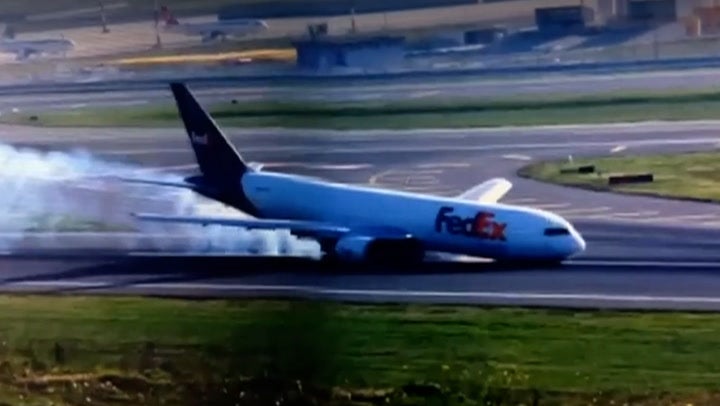Passengers evacuated after Boeing plane tyre bursts while landing in Turkey – the second incident in two days
It was the second incident involving Boeing planes at a Turkish airport in as many days
Your support helps us to tell the story
This election is still a dead heat, according to most polls. In a fight with such wafer-thin margins, we need reporters on the ground talking to the people Trump and Harris are courting. Your support allows us to keep sending journalists to the story.
The Independent is trusted by 27 million Americans from across the entire political spectrum every month. Unlike many other quality news outlets, we choose not to lock you out of our reporting and analysis with paywalls. But quality journalism must still be paid for.
Help us keep bring these critical stories to light. Your support makes all the difference.
Almost 200 people were evacuated from a plane in Turkey on Thursday after one of its tyres burst during landing.
Turkey’s transportation ministry said no one was hurt in the incident at Gazipasa airport near the Mediterranean coastal town of Alanya.
The Boeing 737-800, belonging to Turkey-based Corendon Airlines, stopped safely on the runway after landing.

It was the second incident at a Turkish airport in as many days.
The plane, which carried 184 passengers and six crew members, was on a flight from Cologne, Germany.
Corendon Airlines denied initial media reports that the aircraft had landed on its nose.
Turkey’s transport and infrastructure ministry reported damage to the plane’s front gear but did not provide details.
The runway was not damaged but flights were diverted to the nearby Antalya airport while the aircraft was being removed.
On Wednesday a Boeing 767 cargo aircraft belonging to FedEx Express made an emergency landing at Istanbul Airport after its front landing gear failed.

A video on social media showed the plane using the back landing gear and then dipping its nose with the front portion of the fuselage.
The front landing gear did not deploy, but the pilot managed to stay on the runway, Turkey’s transport ministry said, adding that there were no casualties.
Video footage showed sparks flying and smoke billowing as the front end of the plane scraped along the runway before being doused with firefighting foam.
Elsewhere on Thursday another Boeing 737-300 skidded off the runway of Senegal’s main airport causing injuries to 11 people, four of whom are in a serious condition.
Flights were suspended near the capital Dakar after the plane went into the grass before take-off during the early hours of Thursday, a spokesperson for the main airport Blaise Diagne said.

Dramatic footage on social media shows the plane with the logo of Senegal-based airline Transair standing on the ground with fire-suppressing foam covering the wing.
Local reports suggest the plane is a Boeing 737-300 carrying 78 passengers and that wing caught fire, although this is unconfirmed at this point.
What is the history of the Boeing 737?
The two-engined plane first flew on 9 April 1967 and entered service in February 1968.
Significant elements of its design derive from an even earlier aircraft, the Boeing 707 – which first flew commercially a decade earlier.
The Boeing 737 used the same fuselage cross-section, accommodating six seats abreast, and the nose profile of the 707.
As a twin jet that could carry 100 or more passengers comfortably and efficiently, the 737 proved an immediate success.
It continues to be manufactured today, and is currently on its fourth generation of design.
The original 100/200 series is still flying, particularly with Nolinor, based in Quebec, Canada. The carrier operates probably the oldest fleet of commercial jets in the world: Boeing 737-200 planes, kitted out for landing on the loose-surfaced runways that prevail in northern Canada. Some of the fleet dates back to the early 1970s – but age is not an indicator of risk if aircraft are maintained.
The earliest types are characterised by slim, cigar-shaped engines.

Join our commenting forum
Join thought-provoking conversations, follow other Independent readers and see their replies
Comments